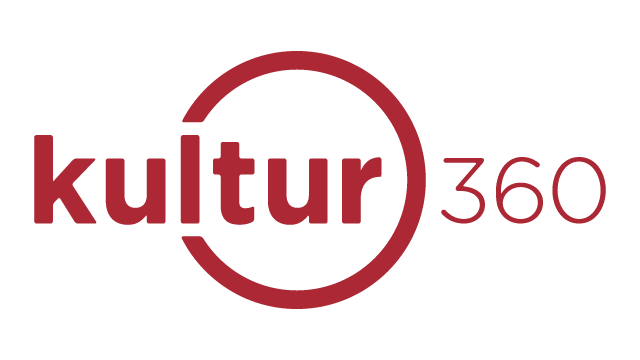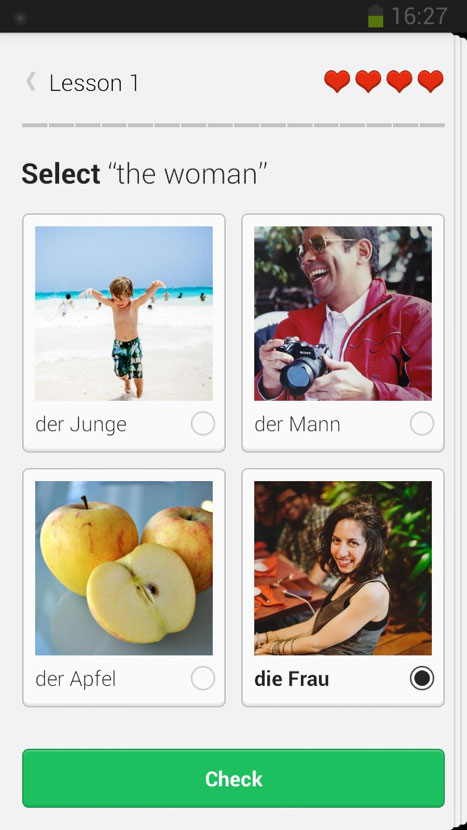Are the rumours true? Is there less reason to study German in higher education today? The answer is decidedly two-fold, with a distinction arising based upon how one understands the state of German language education. On one hand, we can look to actual statistics which demonstrate a notable decline in many factors related to German studies in higher education. Enrollments are down, and faculty positions are becoming fewer and fewer. A report from the Modern Language Association writes that “aggregate enrollments in all languages decreased 6.7% from 2009 to 2013” (“MLA Survey of Enrollment Report Highlights”), and as another sign of the German language’s own decline, German’s once held position of third most studied language was displaced by American Sign Language. German programs in particular were reported to fall 9.3% in enrollments over this period of time. What is troubling however is that this decline is occurring at the same time that other languages are experiencing new signs of growth, as can be seen with Korean, American Sign Language, Portuguese, and as has been the case in recent years, Chinese (“MLA Survey of Enrollment Report Highlights”).
On a broader, institutional-level, there are troubling signs for the future of language programs in general. In the UK, since 1998, 50% of institutions that used to offer degrees in German language have stopped doing so, due to a simple lack of interested students who want to invest the requisite time to learn a second language (“European language degree courses abandoned by many UK universities”). The issue of this perceived decline then only intensifies, as students have fewer universities at which they can choose to study languages, making the very study of languages almost prestigious.
What factors may be causing this decline in studying the German language? Some individuals have pointed to stringent enrolment factors in higher education as impeding the student’s opportunities for success. Due to the fact that language learning offers more room for subjectivity in assessment, it is at times difficult for students to excel to the extent that they can enter the programs they wish to enter at university (“The reasons behind the decline in languages at A level”). This continues however once students have entered university, as language courses are notoriously more difficult and time-demanding than other introductory courses that a student would take, and thus when offered the possibility to choose different elective courses, learners pounce on the opportunity to take courses where concepts can be learnt through memorization and which require less active learning in the classroom.
And yet while statistics and reports may suggest that the German language is in a decline, it is perhaps surprising that we see that the value of liberal Arts degrees are at an all-time high. Forbes magazine recently wrote that the liberal Arts degree has become “tech’s hottest ticket” (“That ‘Useless’ Liberal Arts Degree Has Become Tech’s Hottest Ticket”). What makes learners who invest their educational pursuits in the Arts more valuable? Their critical thinking abilities and abilities to communicate with customers and explain to others why technologies behave the way that they do.
Another report from The Economist, in a study of the value of various foreign languages, speaks too to the value of studying foreign languages, writing specifically that speakers of German will average a salary premium of 3.8% over those who speak no second language; this premium is higher than other common languages such as Spanish or French, which the report suggests is due Germany being a “trade powerhouse, so its language will be more economically valuable for an outsider than the language of a relatively more closed economy” (“Johnson: What is a foreign language worth?”).
These two distinct and countering perspectives highlight today’s reality which is that the relevance and potential of studying the German language is complicated, and students need to understand more than ever the potential utility of German. The 2007 MLA Report encourages “new structures for a changed world”, suggesting that due to the changing dynamics in the world, learning a foreign language and being able to communicate intelligently with other cultures is more relevant today than ever before (“2007 MLA Report”). Even with the seemingly dominant progression of English as a lingua franca, developing proficiency in other languages, especially one like German with its economic and political importance, remains a necessity in today’s world.
What is suggested in the MLA Report is a focus on the translingual and transcultural competencies of an individual. A reconceptualization of the more well-known terms multilingual and multicultural, the addition of trans implies that value is now placed on the “ability to operate between languages” (“2007 MLA Report”), rather than just having the capacity to speak two languages or the understanding of two cultures. In particular, the report suggests a curricular reform which “situate[s] language study in cultural, historical, geographic, and cross-cultural frames within the context of humanistic learning” (“2007 MLA Report”).
How then are current technologies encouraging and facilitating translingual and transcultural competence? Technological innovations are perhaps the greatest sign of the resurgence of opportunities to learn a foreign language like German, rather than avoid it, and technology too presents the most applicable and readily available means by which a language learner can invest his or her time in further developing proficiency in the German language.
A report organized by the German Foreign Office and researched by Daniel Hamilton and Michael Legutke, present 80 recommendations to help strengthen the German language as one worth studying. The report mentions the quality of exchange programs and immersion schools, but also reflects on the decline of such initiatives, thus suggesting that utilizing online resources to effectively mimic this environment, suggesting explicitly:
- Ein Kursangebot im Blended-Learning-Format in Kooperation mit bereits bestehenden Initiativen US-amerikanischer Hochschulen (z.B. University of Nebraska-Lincoln) entwickeln, implementieren und evaluieren. („Strategiepapier DaF USA 2011”)
Rather than explicitly encouraging this development of an blended learning format, there already exists a wealth of digital technologies that facilitate this exact goal and may be a meaningful way to help language learners not only continue to study German, but to see the relevance of the German language beyond the classroom.
Richard Schrodt, a Viennese linguist, addresses one of the concerns of individuals who perceive the German language as being in a decline due to the use of Fetzensprache, or scraps of language that digital media may encourage. He instead suggests that “the German used by digital media is one of many sociological varieties that fulfils important functions in its proper area and doesn’t go beyond this area” (“German will survive its decline”). Although he roots this discussion in the context of text messaging, it clearly extends beyond that, as Schrodt further suggests that the kind of German language that may be encountered in digital media “brings an added aesthetic value into the language of the electronic media” (“German will survive its decline”).
In particular, mobile, place-based learning tools are transforming the landscape within which language learners can interact with the German language. Rather than confining language learning to the traditional classroom, or requiring students to go on an exchange (both of which are nevertheless crucial elements which contribute to fully developing a second language), place-based language learning tools encourage learners to branch out and use the second language in authentic contexts.
Some technologies embrace gamification, rewarding language learners for participating in games and activities that hone second language abilities in one’s free time. Duolingo (www.duolingo.com), for example, presents language learners with a variety of tasks, such as choosing a category of vocabulary items (such as food, animals, plurals, adjectives, etc.) and completing numerous tasks involving written and listening skills. The learner only has three lives while completing each task (the concept of lives is taken directly from videogame terminology which implies that after getting three answers wrong, you lose all of your lives and fail), but should the learner answer all questions correctly without losing three lives, he or she is rewarded with experience points and a form of currency called Lingots. Lingots can then be used to acquire bonuses to help complete more difficult tasks. Furthermore, to promote the social aspect of language learning, Duolingo encourages its learners to “translate the web”, effectively using crowd-sourcing to translate various websites into other languages while simultaneously receiving feedback on the quality of the translation from other language learners who are part of the community. All of this, due to it being a place-based technology, can be done with a language learner’s handheld device anywhere, thus making developing a second language an activity that can be constantly worked towards.
Other technologies place even more emphasis on how the learner interacts with his or her own environment by creating a virtual reality in which the learner interacts in the target language. ARIS (Augmented Reality Interactive Storytelling – www.arisgames.org) allows educators to create virtual storytelling experiences for learners to participate in. By using a handheld device, the learners navigate through a locale (it could be the university at which they study, or a part of the city they reside in) and interact with virtual characters which guide the learners through a story. In order to progress, the learners must understand the foreign language and be able to make correct choices; the character in the game may instruct learners to visit a certain location on campus, such as the library, and only by understanding the specific location which they are asked to visit will the learner receive the next update to the task and be able to proceed. Learners once again are encourages to embrace the social aspect of language learning by communicating with one another while completing these tasks and benefit from collaborating with one another in the foreign language.
A final extension of this, and one which perhaps has the most possibility in terms of making language learning relevant today, is the use of online digital games to allow language learners to interact, and indeed play with, native speakers of the foreign language. Massive multiplayer online role-playing games (MMORPGs) offer vibrant, immersive virtual environments where players create an avatar to represent themselves and then reside within the online world, interacting with other players and collaborating to accomplish tasks and progress in the game. Many of these encounters with other players happen serendipitously, ensuring that each player will have a wholly unique experience that fits their desired style of play. With the importance that universities place on study abroad programs, being able to be immersed in a virtual world with native speakers of German is at least one possibility to replicate some aspects of the study abroad/immersion experience that is so foundational to one’s understanding of a foreign language.
In many ways, it is not that the interest in studying the German language is in decline, but that current and future learners of German need to understand that now, more than ever, there are myriad opportunities to be immersed and engaged in the language that cater to the preferences of each individual learner and which still promote this ideal of translingual and transcultural competence. Will every type of language learning opportunity fit any learner? Certainly not, but of all disciplines, language learning is perhaps best equipped to be done with the things that we already love doing. Whether this is reading, watching TV, playing games, or simply hanging out with friends, using the German language as the medium of interaction is not only plausible, but is entirely beneficial and only helps to further improve one’s second language proficiency.
So is the German language in decline in higher education? Perhaps it is, if we only look at raw statistics. But is studying German still relevant? If anything, it is more relevant today than it was ever before. We just need to find new and innovative means by which to interact and use the German language in our daily lives.
Further Reading
Anders, G. (2015). That “useless” liberal arts degree has become tech’s hottest ticket. Retrieved August 28, 2015, from http://www.forbes.com/sites/georgeanders/2015/07/29/liberal-arts-degree-tech/
Bawden, A. (2013). European language degree courses abandoned by many UK universities. Retrieved August 28, 2015, from http://www.theguardian.com/education/2013/oct/07/european-language-degree-courses-abandoned-universities
Greene, R. L. (2014). Johnson: What is a foreign language worth? Retrieved August 28, 2015, from http://www.economist.com/blogs/prospero/2014/03/language-study
Hamilton, D., & Legutke, M. (2011). Strategiepapier DaF USA 2011. Retrieved from http://c.ymcdn.com/sites/www.aatg.org/resource/resmgr/GermanIntheUS/DaF_USA_Strategiepapier_Lang.pdf
Köster, T. (2014). An interview with Richard Schrodt. “German will survive its decline.” Retrieved August 28, 2015, from https://www.goethe.de/en/spr/mag/20448701.html
The Modern Language Association of America. (2007). Foreign Languages and Higher Education: New Structures for a Changed World. Retrieved from http://www.mla.org/pdf/forlang_news_pdf.pdf
The Modern Language Association of America. (2013). Highlights of the MLA’s 2013 Survey of Enrollments in Languages Other Than English. Retrieved from http://www.mla.org/pdf/2013_enrollment_survey_hig.pdf



